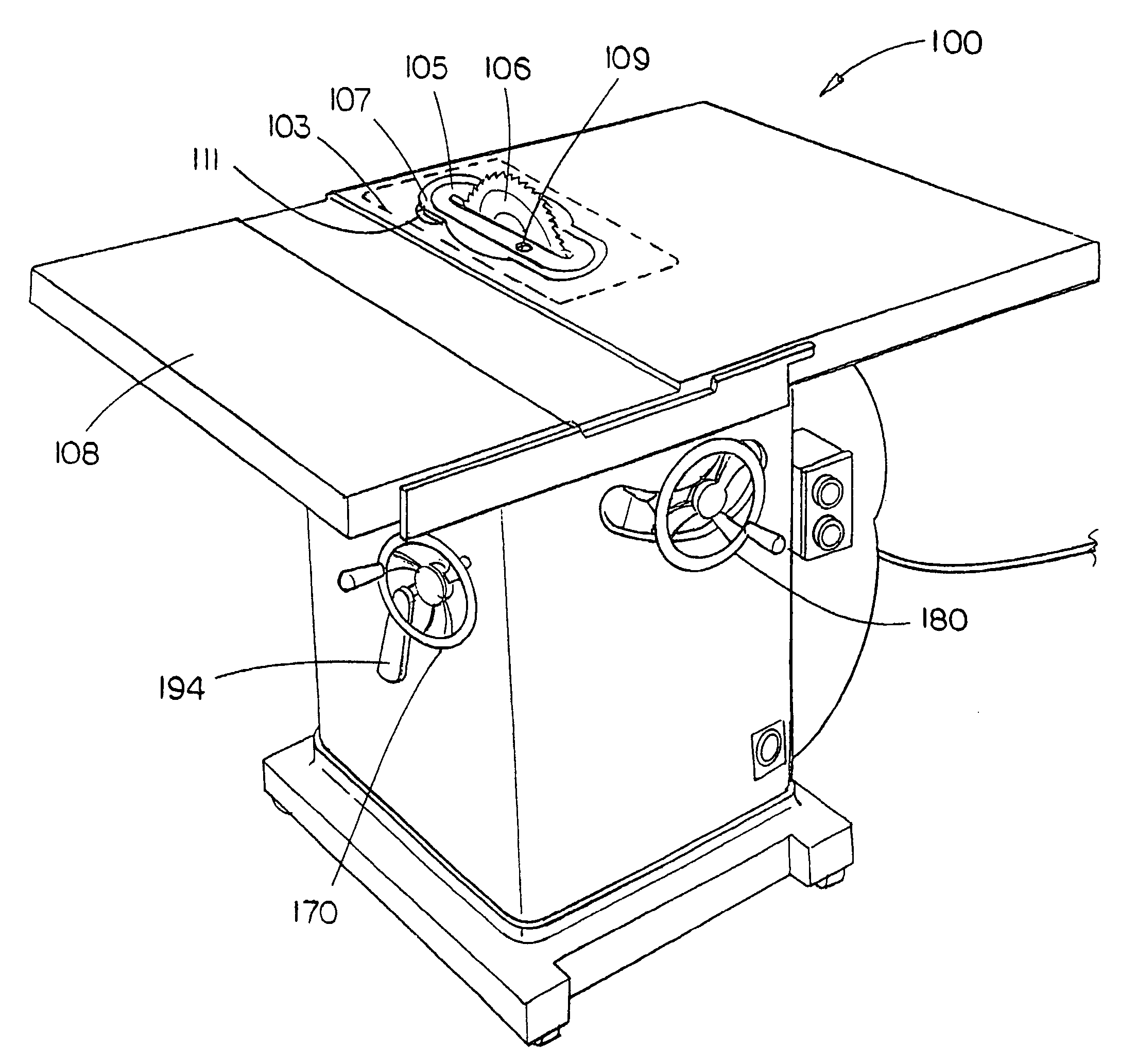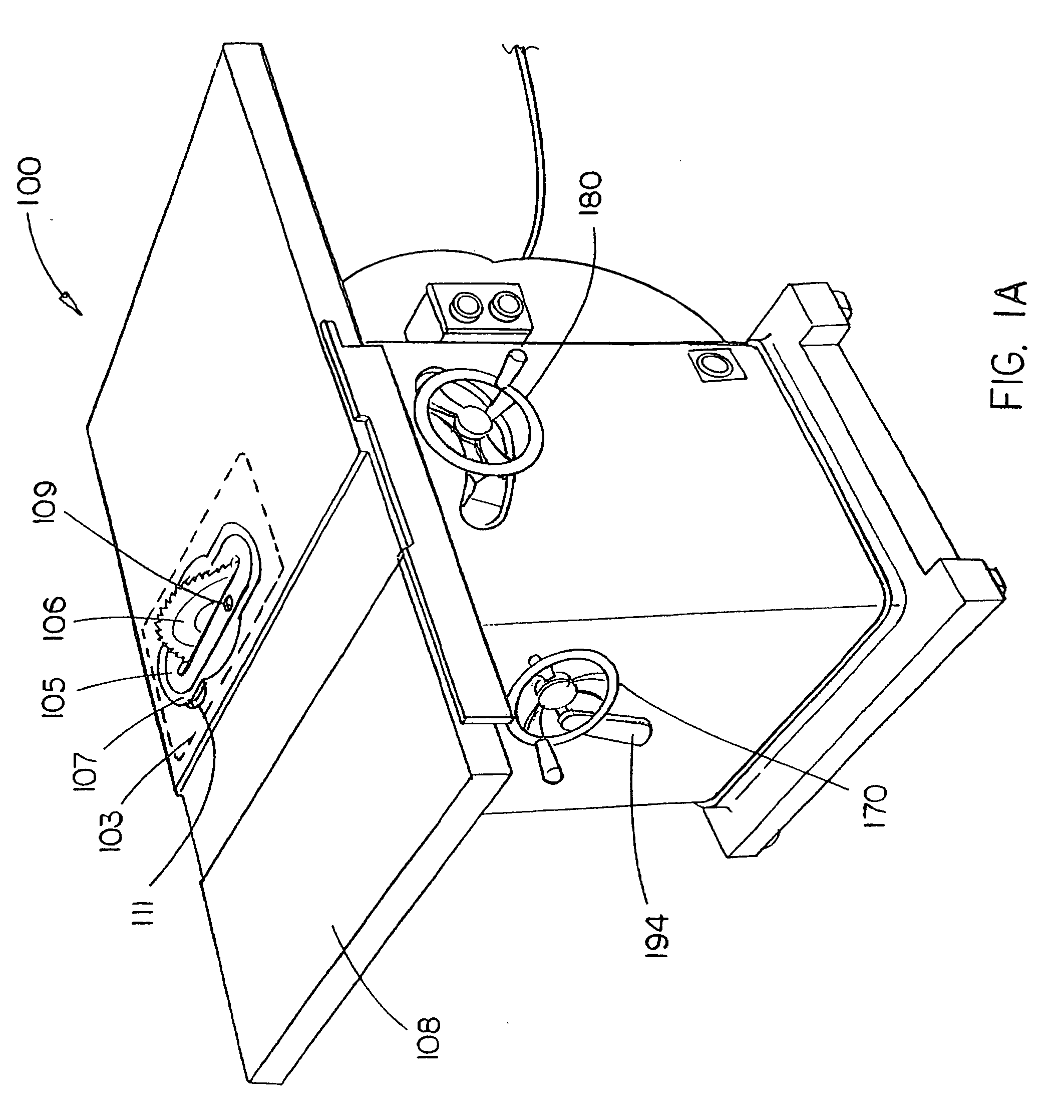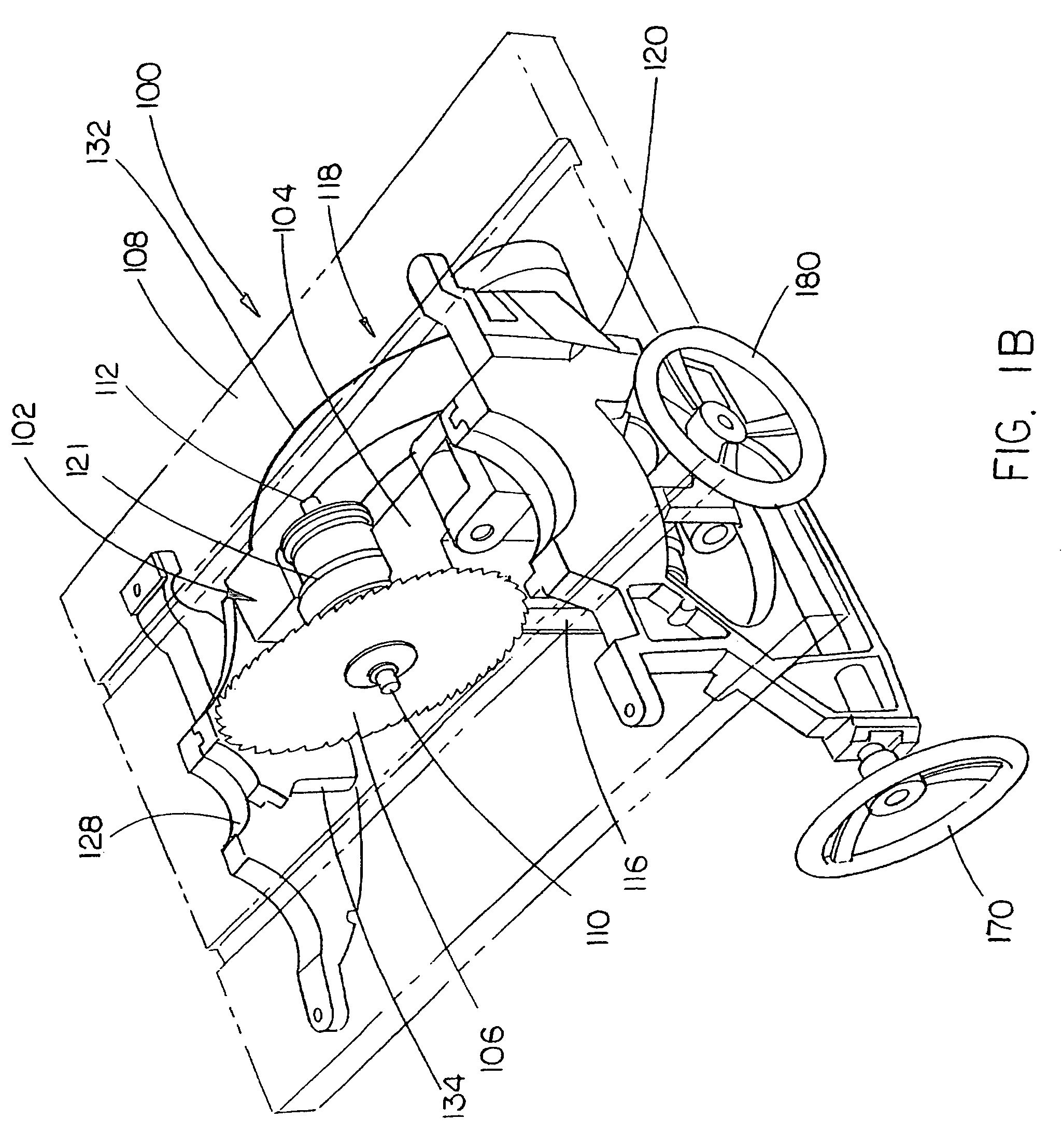Riving knife assembly for a dual bevel table saw
a technology of dual bevels and assembly parts, which is applied in the field of table saws, can solve the problems of many beveling assemblies included with table saw assembly, limited beveling capabilities, and unwanted contact, and achieve the effect of maximizing the functional capability of the saw, promoting ease of use, and full cutting capability
- Summary
- Abstract
- Description
- Claims
- Application Information
AI Technical Summary
Benefits of technology
Problems solved by technology
Method used
Image
Examples
Embodiment Construction
[0054] Reference will now be made in detail to the presently preferred embodiments of the invention, examples of which are illustrated in the accompanying drawings.
[0055] Referring now to FIGS. 1 through 11, a dual bevel table saw 100 in accordance with exemplary embodiments of the present invention are described. The dual bevel table saw 100 includes a circular saw blade 106 operationally coupled with a motor 114, via an arbor assembly 102. In the present embodiment, the arbor assembly 102 is a dual sided arbor assembly for receiving a saw blade on either a first end or second end. The arbor assembly 102 includes an arbor bracket 104 for supporting an associated blade 106 which may be extended through a table 108. The dual bevel table saw 100 further includes a bevel assembly 118 for adjustably beveling the arbor assembly 102 to establish a plurality of angular settings of the saw blade 106. The circular saw blade 106 may extend through a throat plate assembly 103 which, in the pr...
PUM
| Property | Measurement | Unit |
|---|---|---|
| angles | aaaaa | aaaaa |
| angles | aaaaa | aaaaa |
| angles | aaaaa | aaaaa |
Abstract
Description
Claims
Application Information
 Login to View More
Login to View More - R&D
- Intellectual Property
- Life Sciences
- Materials
- Tech Scout
- Unparalleled Data Quality
- Higher Quality Content
- 60% Fewer Hallucinations
Browse by: Latest US Patents, China's latest patents, Technical Efficacy Thesaurus, Application Domain, Technology Topic, Popular Technical Reports.
© 2025 PatSnap. All rights reserved.Legal|Privacy policy|Modern Slavery Act Transparency Statement|Sitemap|About US| Contact US: help@patsnap.com



